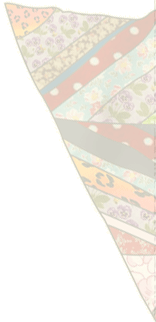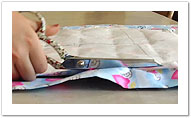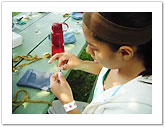

 Cornell student Denise Green wanted to share her passion for design, to connect with young people, and to contribute to the community. Teaching sewing skills through the local Urban 4-H Outreach Program seemed ideal. But what if the young people were bored sewing sample seams and learning construction terms? Simply reverse the process — teach the sewing skills AFTER the youth create their clothing designs.
Cornell student Denise Green wanted to share her passion for design, to connect with young people, and to contribute to the community. Teaching sewing skills through the local Urban 4-H Outreach Program seemed ideal. But what if the young people were bored sewing sample seams and learning construction terms? Simply reverse the process — teach the sewing skills AFTER the youth create their clothing designs.
Step 1. Design a garment.
The 4-Hers began by browsing fashion magazines and imagining what they wanted to make. Dr. Lewis helped the young designers translate their ideas into sketches. Denise turned those sketches into patterns and sewing instructions.
 Step 2. Learn and practice sewing skills.
Step 2. Learn and practice sewing skills.
Once the youth were motivated, Denise taught sewing skills through mini-projects. Thus, members practiced cutting fabrics on grain and sewing straight seams by making a patchwork pillow. They were introduced to curved seams and basic garment construction when they made pajama pants. They learned hand sewing and embellishment techniques by re-fashioning recycled jeans into a purse.
 Step 3. Make the garment.
Step 3. Make the garment.
Young sewers used their new skills and Denise’s patterns to sew hoodies, skirts, shirts, and pants of their own design. Yes, in some cases they could have purchased a pattern but designing the garment themselves motivated them to practice sewing and strengthened their self-confidence and self-expression.
Step 4. Participate in community.
 The 4-H members showcased their products at a fashion show for their parents and exhibited their work at the county 4-H Fair. They also sewed a banner for the city festival parade and made a collaborative strip quilt for a local charity.
The 4-H members showcased their products at a fashion show for their parents and exhibited their work at the county 4-H Fair. They also sewed a banner for the city festival parade and made a collaborative strip quilt for a local charity.
Support provided by the College of Human Ecology, Cornell University and Smith Lever funds from the Cooperative State Research,
Education, and Extension Service, U.S. Department of Agriculture. Any opinions, findings, conclusions, or recommendations
expressed are those of the author(s) and do not necessarily reflect the view of the U.S. Department of Agriculture.